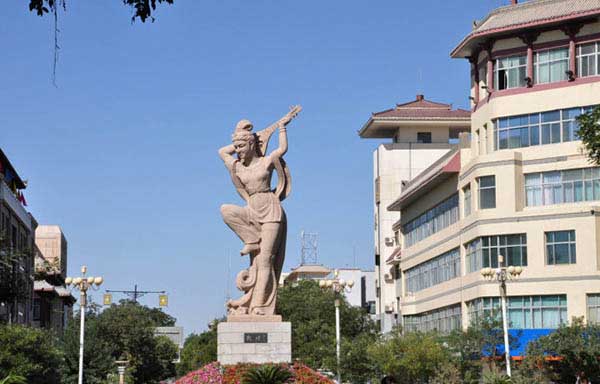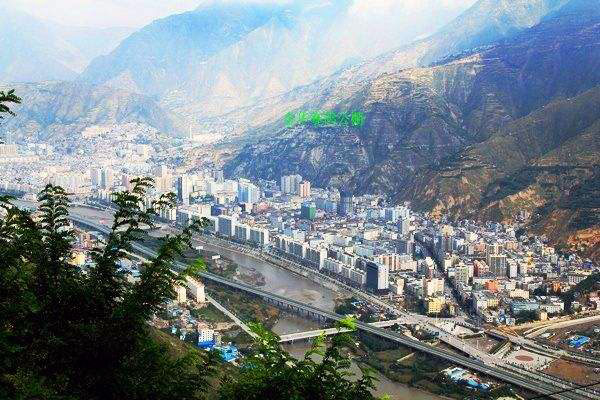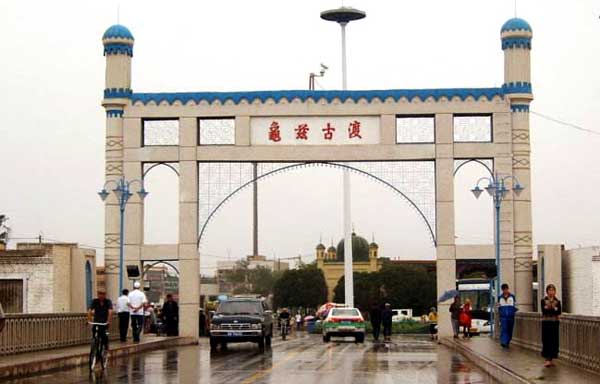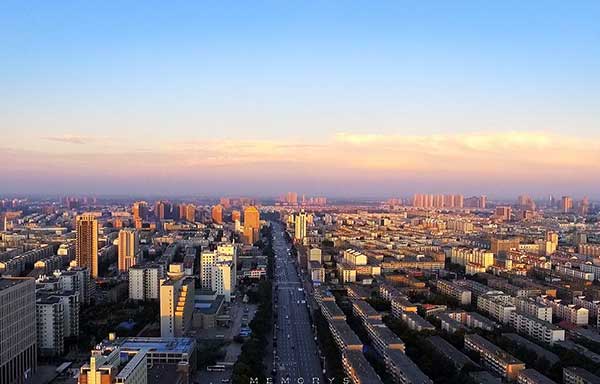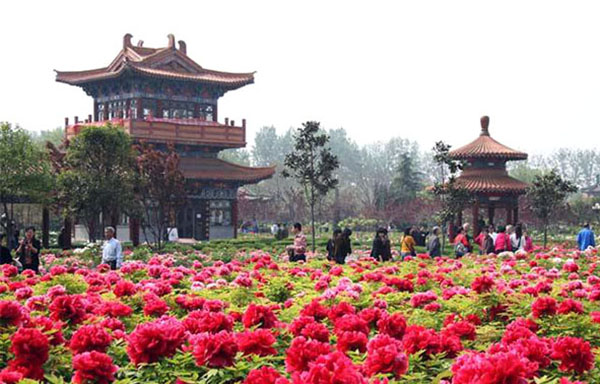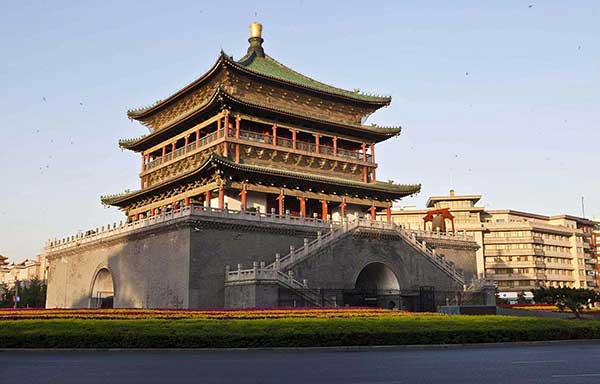- By admin
- In SilkRoadKnowledge
- 2016-06-07
Explorers On The Silk Road
The best-known Silk Road explorer is Marco Polo (1254~1324). He traveled to China via the Steppe Silk Road, spent 17 years traveling around China, and had been to number of Chinese cities, including Hangzhou, Yangzhou, Beijing, Xi’an, Kaifeng, Suzhou, etc. According to his records of the China travel experience, he became a friend to Mongolian Emperor Kublai Khan and even took an official post in Yangzhou. China’s affluence struck him so much that he would often use “millions of” to illustrate the quantity of wealth, population, vastness of land, etc. of the places he visited, hence the book of his travel records being entitled “Il Milione”.
Marco Polo was by no means the first and only traveler to China from the Mediaeval Europe. However, his travel experiences as related in the book unveiled to the Europeans a whole new horizon about the Orient, and soon became immensely popular in Europe. More explorers and navigators were greatly inspired, and joined the exploration in the Orient. Columbus was said to have started his historical voyages due to his great admiration for Chinese civilization (though he finally made it to America, instead).
Bento de Goes(1561~1607), Portuguese, became another distinguished explorer on the Silk Road. The Mediaeval Europeans were doubtful of the very existence of “Cathay” as described by Marco Polo. And Góis was sent by the Society of Jesus to explore into the Far East to find it out. His trip covered a long section of the Oasis Silk Road. He set out with a caravan from Pakistan, passed Kabul (Afghanistan), the Hindu Kush Mountains, the Pamirs, Tashkurgha, and Yarkand where he turned northeast to arrive at Karashahr via Aksu and Kuqa. In Karashahr, Góis learned from the passing merchants about the Ming Dynasty China and the stories of Matteo Ricci’s mission in Beijing, and was convinced that “Cathay” was no other than China. Excited about the discovery, he made up his mind to travel further east. He passed Turpan, Kumul, Jiayuguan Pass, and reached Jiuquan in the winter of 1607, where, unfortunately, he contracted a serious illness and died. Góis recorded his travel experiences in his diary which was to be compiled by Matteo Ricci into a book.
Since the 17th century, the strategic significance of Central Asia and its surrounding regions drew attention from the Western powers. Many expeditions to the region were organized with special, designated academic purposes, in particular geological and geographical interests. Explorers from Britain and Russia, two powers struggling for influence in Central Asia, played a leading role in the explorations in the period up to the end of 19th century.
Nikolai Mikhaylovich Przhevalsky (1839~1888) launched four explorations to northwestern China’s Xinjiang, Inner Mongolia, and Tibet between 1870 and 1885. His interests focused on natural geography and studies of fauna and flora, with unprecedented academic achievements. A total of 15,000 specimens were collected, encompassing 702 mammal species, 5010 bird species, 1200 reptile species, and 643 fish species. He was the first man to capture Equus caballus (wild horse), hence its name Przewalski's Horse. Przhevalsky trod a long path in west China regions, and got more accurate measurements of the geographical facts in Central Asia areas, making himself the first man to describe Xinjiang’s general landscape as “two basins flanked by three mountain ranges”.
Contemporary Russian explorers included: G.M Potanin, who was also a successful figure in various other fields; Groome brothers, who compiled Travel to Western Parts of China, etc. Przhevalsky’s disciple Kozlov led many field visits in Western parts of China and was made world famous by his excavation of Heicheng (Khara-Khoto). Collectively, the Russian explorers were more accomplished than those of any other country.
On the British side, the explorer with equal fame to Przhevalsky was Sir Francis Edward Younghusband (1863~1942). In 1887, he became the first European to traverse the grand Gobi Desert from Hohhot to Kumul. Afterwards, he followed the route of the ancient Oasis Silk Road to reach Kashgar and Yarkand, from where he crossed the Pamir Plateau to reach Kashmir. His travel experiences were collected in his book entitled The Heart of a Continent: A Narrative of Travels in Manchuria, Across the Gobi Desert, Through the Himalayas, the Pamirs, and Chitral, 1884-1894.
The late 19th century and the first half of the 20th century was not only an eventful period in world history, but also an era full of influential findings in the exploration of Central Asia regions. The geographical and archeological findings of earlier explorers, coupled with the rise of Oriental studies, pushed the Silk Road-Central Asia regions into the spotlight. Explorations of this period covered a much broader range of research fields – academic disciplines of archeology, history, ethnic studies, linguistics, religion, geography, meteorology, etc. Important findings include the ancient city of Loulan, Han Dynasty bamboo slips excavated in Juyan, Niya Relics, Miran Relics, Xiaohe Tomb Complex Relics, Junggar Paleontologic Fossils, Dunhuang manuscripts, and so on..
A number of renowned explorers distinguished themselves in this period: Sven Hedin, Sir Aurel Stein, Albert von LeCop, Paul Pelliot, Langdon Warner, etc.
Sven Hedin (1865~1952), Swedish, was the most accomplished of them. His rediscovered the ancient city of Loulan, explored through the Tarim Basin, and put forward the important hypothesis of the peripatetic movements of Lake Lop Nur. With a lifelong “marriage” to the career of exploration in China, Hedin was a prolific researcher, My Life as an Explorer being his signature work with long-standing world-wide popularity.
Sir Marc Aurel Stein (1862~1943), Hungarian archeologist, made four major expeditions to Central Asia in 1900, 1906-8, 1913-16 and 1930. Aside from numerous relics he uncovered, Stein’s most significant findings include the Taklamakan Desert oasis of Dandan Oilik and the Niya Relics site, the latter marking a shift in the global intellectual vision of the history of Central Asia civilization. Perhaps, Stein is better known to the Chinese for his discovery, if not a pillage, at Mogao Grottoes in 1907. Having gradually won the confidence of the Taoist caretaker, he acquired a huge collection of cultural relics, including the Diamond Sutra (the world’s oldest printed text which had a date), 40,000 other scrolls, 24 cases of manuscripts, 4 cases of paintings and relics, and countless other artifacts. He was knighted for his efforts and inspired other treasure hunters and explorers to take the toll on Dunhuang. Stein’s collection is divided between the British Museum, the British Library, the Srinagar Museum, and the National Museum, New Delhi, and is significant for the study of Central Asia history and the art and literature of Buddhism.
Paul Pelliot (1878~1945) represented the French explorers on the Silk Road. An Orientalist, he was able to speak Chinese and Uyghur (only two of the 13 languages he spoke) fluently, with greately facilitated his exploration in China. After his visits to Xinjiang cities like Kashgar, Kucha, Urumqi, etc, he arrived at Dunhuang in 1907, just three months after Aurel Stein left. And, just like Stein, Pelliot acquired a large collection of documents and manuscripts at Mogao Grottoes at a fairly low price (90 pounds). Pelliot’s Dunhuang collection is mostly stored at the National Library of France (La Bibliothèque nationale de France).
American explorers were represented by Langdon Warner (1881–1955) and Ellsworth Huntington (1876~1947). Warner’s work in China has been a subject of much controversy, for he used a special chemical solution (strong glue) to detach the paintings on the cave wall, causing damages to the site. Known for his academic studies on climatic determinism and economic geography, Huntington led two expeditions to Xinjiang between 1903 and 1906 on the sponsorship of the Ford Foundation, and studied the relationship between climate and economic growth the region. His representative work Climate and Civilization keeps a valuable record of statistics and gives out a number of ecological warnings that are still enlightening today.
Marco Polo was by no means the first and only traveler to China from the Mediaeval Europe. However, his travel experiences as related in the book unveiled to the Europeans a whole new horizon about the Orient, and soon became immensely popular in Europe. More explorers and navigators were greatly inspired, and joined the exploration in the Orient. Columbus was said to have started his historical voyages due to his great admiration for Chinese civilization (though he finally made it to America, instead).
Bento de Goes(1561~1607), Portuguese, became another distinguished explorer on the Silk Road. The Mediaeval Europeans were doubtful of the very existence of “Cathay” as described by Marco Polo. And Góis was sent by the Society of Jesus to explore into the Far East to find it out. His trip covered a long section of the Oasis Silk Road. He set out with a caravan from Pakistan, passed Kabul (Afghanistan), the Hindu Kush Mountains, the Pamirs, Tashkurgha, and Yarkand where he turned northeast to arrive at Karashahr via Aksu and Kuqa. In Karashahr, Góis learned from the passing merchants about the Ming Dynasty China and the stories of Matteo Ricci’s mission in Beijing, and was convinced that “Cathay” was no other than China. Excited about the discovery, he made up his mind to travel further east. He passed Turpan, Kumul, Jiayuguan Pass, and reached Jiuquan in the winter of 1607, where, unfortunately, he contracted a serious illness and died. Góis recorded his travel experiences in his diary which was to be compiled by Matteo Ricci into a book.
Since the 17th century, the strategic significance of Central Asia and its surrounding regions drew attention from the Western powers. Many expeditions to the region were organized with special, designated academic purposes, in particular geological and geographical interests. Explorers from Britain and Russia, two powers struggling for influence in Central Asia, played a leading role in the explorations in the period up to the end of 19th century.
Nikolai Mikhaylovich Przhevalsky (1839~1888) launched four explorations to northwestern China’s Xinjiang, Inner Mongolia, and Tibet between 1870 and 1885. His interests focused on natural geography and studies of fauna and flora, with unprecedented academic achievements. A total of 15,000 specimens were collected, encompassing 702 mammal species, 5010 bird species, 1200 reptile species, and 643 fish species. He was the first man to capture Equus caballus (wild horse), hence its name Przewalski's Horse. Przhevalsky trod a long path in west China regions, and got more accurate measurements of the geographical facts in Central Asia areas, making himself the first man to describe Xinjiang’s general landscape as “two basins flanked by three mountain ranges”.
Contemporary Russian explorers included: G.M Potanin, who was also a successful figure in various other fields; Groome brothers, who compiled Travel to Western Parts of China, etc. Przhevalsky’s disciple Kozlov led many field visits in Western parts of China and was made world famous by his excavation of Heicheng (Khara-Khoto). Collectively, the Russian explorers were more accomplished than those of any other country.
On the British side, the explorer with equal fame to Przhevalsky was Sir Francis Edward Younghusband (1863~1942). In 1887, he became the first European to traverse the grand Gobi Desert from Hohhot to Kumul. Afterwards, he followed the route of the ancient Oasis Silk Road to reach Kashgar and Yarkand, from where he crossed the Pamir Plateau to reach Kashmir. His travel experiences were collected in his book entitled The Heart of a Continent: A Narrative of Travels in Manchuria, Across the Gobi Desert, Through the Himalayas, the Pamirs, and Chitral, 1884-1894.
The late 19th century and the first half of the 20th century was not only an eventful period in world history, but also an era full of influential findings in the exploration of Central Asia regions. The geographical and archeological findings of earlier explorers, coupled with the rise of Oriental studies, pushed the Silk Road-Central Asia regions into the spotlight. Explorations of this period covered a much broader range of research fields – academic disciplines of archeology, history, ethnic studies, linguistics, religion, geography, meteorology, etc. Important findings include the ancient city of Loulan, Han Dynasty bamboo slips excavated in Juyan, Niya Relics, Miran Relics, Xiaohe Tomb Complex Relics, Junggar Paleontologic Fossils, Dunhuang manuscripts, and so on..
A number of renowned explorers distinguished themselves in this period: Sven Hedin, Sir Aurel Stein, Albert von LeCop, Paul Pelliot, Langdon Warner, etc.
Sven Hedin (1865~1952), Swedish, was the most accomplished of them. His rediscovered the ancient city of Loulan, explored through the Tarim Basin, and put forward the important hypothesis of the peripatetic movements of Lake Lop Nur. With a lifelong “marriage” to the career of exploration in China, Hedin was a prolific researcher, My Life as an Explorer being his signature work with long-standing world-wide popularity.
Sir Marc Aurel Stein (1862~1943), Hungarian archeologist, made four major expeditions to Central Asia in 1900, 1906-8, 1913-16 and 1930. Aside from numerous relics he uncovered, Stein’s most significant findings include the Taklamakan Desert oasis of Dandan Oilik and the Niya Relics site, the latter marking a shift in the global intellectual vision of the history of Central Asia civilization. Perhaps, Stein is better known to the Chinese for his discovery, if not a pillage, at Mogao Grottoes in 1907. Having gradually won the confidence of the Taoist caretaker, he acquired a huge collection of cultural relics, including the Diamond Sutra (the world’s oldest printed text which had a date), 40,000 other scrolls, 24 cases of manuscripts, 4 cases of paintings and relics, and countless other artifacts. He was knighted for his efforts and inspired other treasure hunters and explorers to take the toll on Dunhuang. Stein’s collection is divided between the British Museum, the British Library, the Srinagar Museum, and the National Museum, New Delhi, and is significant for the study of Central Asia history and the art and literature of Buddhism.
Paul Pelliot (1878~1945) represented the French explorers on the Silk Road. An Orientalist, he was able to speak Chinese and Uyghur (only two of the 13 languages he spoke) fluently, with greately facilitated his exploration in China. After his visits to Xinjiang cities like Kashgar, Kucha, Urumqi, etc, he arrived at Dunhuang in 1907, just three months after Aurel Stein left. And, just like Stein, Pelliot acquired a large collection of documents and manuscripts at Mogao Grottoes at a fairly low price (90 pounds). Pelliot’s Dunhuang collection is mostly stored at the National Library of France (La Bibliothèque nationale de France).
American explorers were represented by Langdon Warner (1881–1955) and Ellsworth Huntington (1876~1947). Warner’s work in China has been a subject of much controversy, for he used a special chemical solution (strong glue) to detach the paintings on the cave wall, causing damages to the site. Known for his academic studies on climatic determinism and economic geography, Huntington led two expeditions to Xinjiang between 1903 and 1906 on the sponsorship of the Ford Foundation, and studied the relationship between climate and economic growth the region. His representative work Climate and Civilization keeps a valuable record of statistics and gives out a number of ecological warnings that are still enlightening today.
0
Related destinations
Why Choose Us?
We are the top Silk Road tour operator based in Dunhuang, China. We focus on providing well designed Silk Road China Tours with resonable price and thoughtful service.
- Easy & carefree booking
- The best value
- Great travel experience
- Locally operated
Hot Tours
-

6 days Gansu tour to Binglingsi, Xiahe and Langmusi
Tour type : Private tour Price : from *** Destinations : Lanzhou - linxia - Xiahe - Langmusi - Hezuo - Lanzhou -

12 Days Gansu Highlights Tour
Tour type : Private tour Price : from *** Destinations : Xian – Tianshui – Lanzhou – Xiahe – Langmusi – Hezuo – Zhangye – Jiayuguan - Dunhuang -

10 Days Silk Road Classic Tour
Tour type : Private tour Price : from *** Destinations : Xian - Zhangye - Jiayuguan - Dunhuang - Turpan - Urumqi -

5 Days Zhangye - Alxa youqi Highlights Tour
Tour type : Private Tour Price : from *** Destinations : Zhangye - Alax youqi - Zhangye

